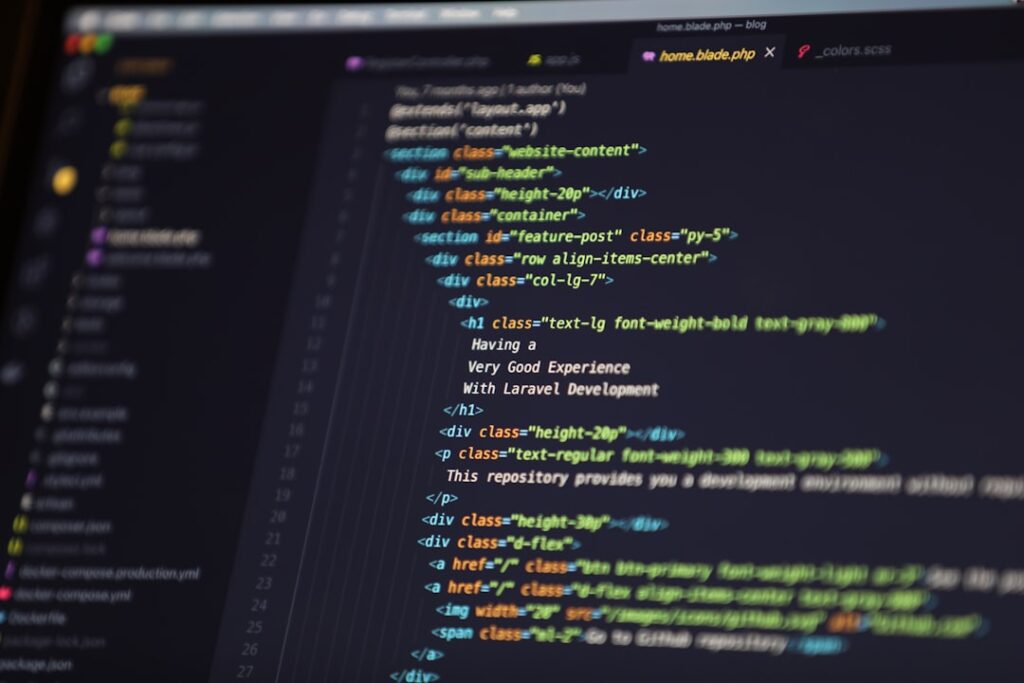Medical coding is a critical component of the healthcare industry, serving as the bridge between healthcare providers and payers. It involves the translation of healthcare diagnoses, procedures, medical services, and equipment into universal alphanumeric codes. These codes are essential for billing, insurance claims, and maintaining patient records.
As healthcare systems evolve and the volume of data increases, the importance of accurate and efficient medical coding cannot be overstated. It ensures that healthcare providers are reimbursed for their services while also facilitating the collection of data for research and public health initiatives. In recent years, the landscape of medical coding has been transformed by technological advancements.
The integration of advanced software solutions has streamlined processes, reduced errors, and improved overall efficiency. As healthcare organizations strive to enhance their operational capabilities, understanding the nuances of medical coding and the role of advanced software becomes increasingly relevant. This article will explore the challenges faced in medical coding, the benefits and features of advanced software, implementation strategies, training requirements, and the future outlook for medical coding in a technology-driven environment.
Key Takeaways
- Medical coding is the process of converting medical diagnoses, procedures, and services into universal alphanumeric codes.
- Challenges in medical coding include accuracy, compliance with regulations, and keeping up with frequent changes in coding guidelines.
- Advanced software in medical coding offers benefits such as increased accuracy, streamlined workflow, and improved compliance with regulations.
- Features of advanced software for medical coding include automated code suggestions, real-time error checking, and integration with electronic health records.
- Implementation of advanced software in medical facilities requires thorough training and ongoing support for staff to effectively utilize the software.
Challenges in Medical Coding
Despite its critical role, medical coding is fraught with challenges that can hinder efficiency and accuracy. One of the primary issues is the complexity of coding systems themselves. The transition from ICD-9 to ICD-10, for instance, introduced a significant increase in the number of codes—from approximately 14,000 to over 68,000.
This complexity can lead to confusion among coders, resulting in errors that can have financial repercussions for healthcare providers. Additionally, the constant updates to coding guidelines necessitate ongoing education and adaptation, which can be resource-intensive. Another significant challenge is the prevalence of incomplete or inaccurate documentation from healthcare providers.
When clinical documentation does not accurately reflect the services rendered or the patient’s condition, coders may struggle to assign the correct codes. This not only affects reimbursement but can also lead to compliance issues with regulatory bodies. Furthermore, the increasing demand for real-time data processing in healthcare settings places additional pressure on coders to work quickly without sacrificing accuracy.
Benefits of Advanced Software in Medical Coding

The adoption of advanced software solutions in medical coding offers numerous benefits that address many of the challenges faced by healthcare organizations. One of the most significant advantages is enhanced accuracy. Advanced coding software often incorporates artificial intelligence (AI) and machine learning algorithms that can analyze clinical documentation and suggest appropriate codes based on context.
This reduces the likelihood of human error and ensures that coders are utilizing the most current coding standards. Moreover, advanced software can significantly improve efficiency in the coding process. By automating repetitive tasks such as code lookup and validation, coders can focus on more complex cases that require human judgment.
This not only speeds up the coding process but also allows for a more streamlined workflow within healthcare facilities. Additionally, many advanced software solutions offer real-time analytics and reporting capabilities, enabling organizations to monitor coding performance and identify areas for improvement.
Features of Advanced Software for Medical Coding
| Features | Description |
|---|---|
| Automatic Code Suggestions | Advanced software can provide real-time suggestions for medical codes based on the documentation. |
| Integration with EHR Systems | The software can seamlessly integrate with Electronic Health Record (EHR) systems to access patient data. |
| Compliance Checking | It can perform compliance checks to ensure that the codes are accurate and meet regulatory requirements. |
| Reporting and Analytics | Advanced software can generate reports and provide analytics on coding trends and performance. |
| Workflow Management | It can streamline the coding process and manage the workflow of coding tasks efficiently. |
Advanced medical coding software comes equipped with a variety of features designed to enhance usability and effectiveness. One key feature is integrated clinical documentation improvement (CDI) tools that assist coders in ensuring that documentation meets coding requirements. These tools often provide prompts or suggestions based on best practices, helping to bridge gaps between clinical documentation and coding accuracy.
Another important feature is user-friendly interfaces that facilitate ease of use for coders at all experience levels. Intuitive dashboards allow coders to navigate through tasks efficiently while providing access to necessary resources such as coding guidelines and reference materials. Additionally, many advanced software solutions offer customizable workflows that can be tailored to meet the specific needs of a healthcare organization, further enhancing productivity.
Implementation of Advanced Software in Medical Facilities
Implementing advanced software in medical facilities requires careful planning and execution to ensure a smooth transition. The first step involves conducting a thorough needs assessment to identify specific challenges within the current coding process. This assessment should include input from coders, billing staff, and IT professionals to ensure that all perspectives are considered.
Once needs are identified, selecting the right software solution becomes paramount. Organizations should evaluate various options based on features, scalability, user-friendliness, and vendor support. After selecting a solution, a phased implementation approach is often recommended.
This allows for testing and adjustments before full-scale deployment, minimizing disruptions to daily operations.
Training and Support for Using Advanced Software

Comprehensive Training for Coders
Healthcare organizations must invest in training programs that provide coders with the skills needed to get the most out of their advanced medical coding software. This includes understanding how to use the software’s features to improve coding accuracy and efficiency, as well as how to troubleshoot common issues.
Ongoing Support for Continuous Improvement
In addition to comprehensive training, ongoing support is crucial as technology continues to evolve. Organizations should establish a support system that includes access to help desks, online resources, and regular updates on software enhancements. This will empower coders to stay up-to-date with changes in coding guidelines and software capabilities.
Encouraging a Culture of Continuous Learning
By fostering a culture of continuous learning, healthcare organizations can ensure that their coders are always equipped with the latest knowledge and skills needed to succeed. This includes providing ongoing training and support, as well as encouraging coders to share their knowledge and best practices with one another.
Impact of Advanced Software on Medical Coding Efficiency
The impact of advanced software on medical coding efficiency is profound. By automating routine tasks and providing intelligent suggestions for code selection, these solutions enable coders to complete their work more quickly without sacrificing quality. Studies have shown that organizations that implement advanced coding software experience significant reductions in claim denials due to coding errors, leading to improved revenue cycles.
Furthermore, enhanced efficiency allows healthcare organizations to allocate resources more effectively. Coders can take on additional responsibilities or focus on more complex cases that require nuanced understanding rather than being bogged down by administrative tasks. This shift not only improves job satisfaction among coders but also contributes to better patient care by ensuring that healthcare providers receive timely reimbursement for their services.
Future of Medical Coding with Advanced Software
As technology continues to advance at an unprecedented pace, the future of medical coding will likely be shaped by emerging trends such as artificial intelligence, natural language processing (NLP), and predictive analytics. AI-driven tools will become increasingly sophisticated in their ability to analyze vast amounts of clinical data and suggest appropriate codes with minimal human intervention. Moreover, as telehealth services expand and new treatment modalities emerge, coding systems will need to adapt accordingly.
Advanced software solutions will play a crucial role in ensuring that coders can keep pace with these changes while maintaining compliance with regulatory standards such as HIPAA. In conclusion, the integration of advanced software into medical coding processes presents a transformative opportunity for healthcare organizations. By addressing existing challenges through enhanced accuracy and efficiency, these solutions pave the way for improved financial outcomes and better patient care.
As healthcare professionals and IT decision-makers navigate this evolving landscape, embracing advanced software will be essential for staying competitive in an increasingly data-driven industry. Key Takeaways:
– Medical coding is vital for accurate billing and data collection in healthcare.
– Challenges include complexity in coding systems and documentation inaccuracies.
– Advanced software enhances accuracy and efficiency through automation and AI.
– Key features include CDI tools, user-friendly interfaces, and customizable workflows.
– Successful implementation requires careful planning, training, and ongoing support.
– The future of medical coding will be shaped by AI advancements and evolving healthcare practices.
– Embracing technology is essential for improving operational capabilities in healthcare settings.
If you are interested in learning more about cybersecurity and protecting sensitive medical data, you may want to check out this article on the importance of phishing campaigns: Gone Phishing: The Importance of Phishing Campaigns. Understanding the tactics used by cybercriminals can help healthcare organizations choose the right medical coding software to safeguard patient information.
FAQs
What is medical coding software?
Medical coding software is a tool used by healthcare professionals to assign specific codes to medical diagnoses, procedures, and services. These codes are used for billing, insurance claims, and data analysis.
How does medical coding software work?
Medical coding software works by allowing users to input patient information, diagnoses, and procedures, and then automatically generates the appropriate medical codes based on standardized code sets such as ICD-10, CPT, and HCPCS.
What are the benefits of using medical coding software?
Using medical coding software can help healthcare providers streamline the coding process, reduce errors, improve accuracy in billing and claims, and ensure compliance with coding guidelines and regulations.
What features should I look for in medical coding software?
When choosing medical coding software, it’s important to look for features such as code lookup, code validation, integration with electronic health records (EHR) systems, compliance with coding standards, and reporting capabilities.
Is medical coding software user-friendly?
Many medical coding software solutions are designed to be user-friendly, with intuitive interfaces and helpful features to guide users through the coding process. Training and support are often available to help users get the most out of the software.
Is medical coding software compliant with industry regulations?
Reputable medical coding software solutions are designed to be compliant with industry regulations and coding standards, such as HIPAA, ICD-10, and CPT guidelines. It’s important to choose a software provider that prioritizes compliance and stays up to date with regulatory changes.


